The Silk Road
Traveling by plane, road and camel, trace one of humankind’s most important arteries of trade and culture from China to Kyrgyzstan to Uzbekistan. This immersive "journey through time" ties together whole passels of civilizations, epochs and sceneries, traversing the heart of Asia by following one of the Silk Road's major branches. With Xian and Tashkent as its bookends, skirt deserts, lope over mountains, and cross rare borders. See fantastic sites, such as a ground-level look at the Terracotta Warriors, Singing Sand Mountain and Urumchi - earth's most landlocked place. Interwoven throughout are personal interactions bringing these fabled places to life.
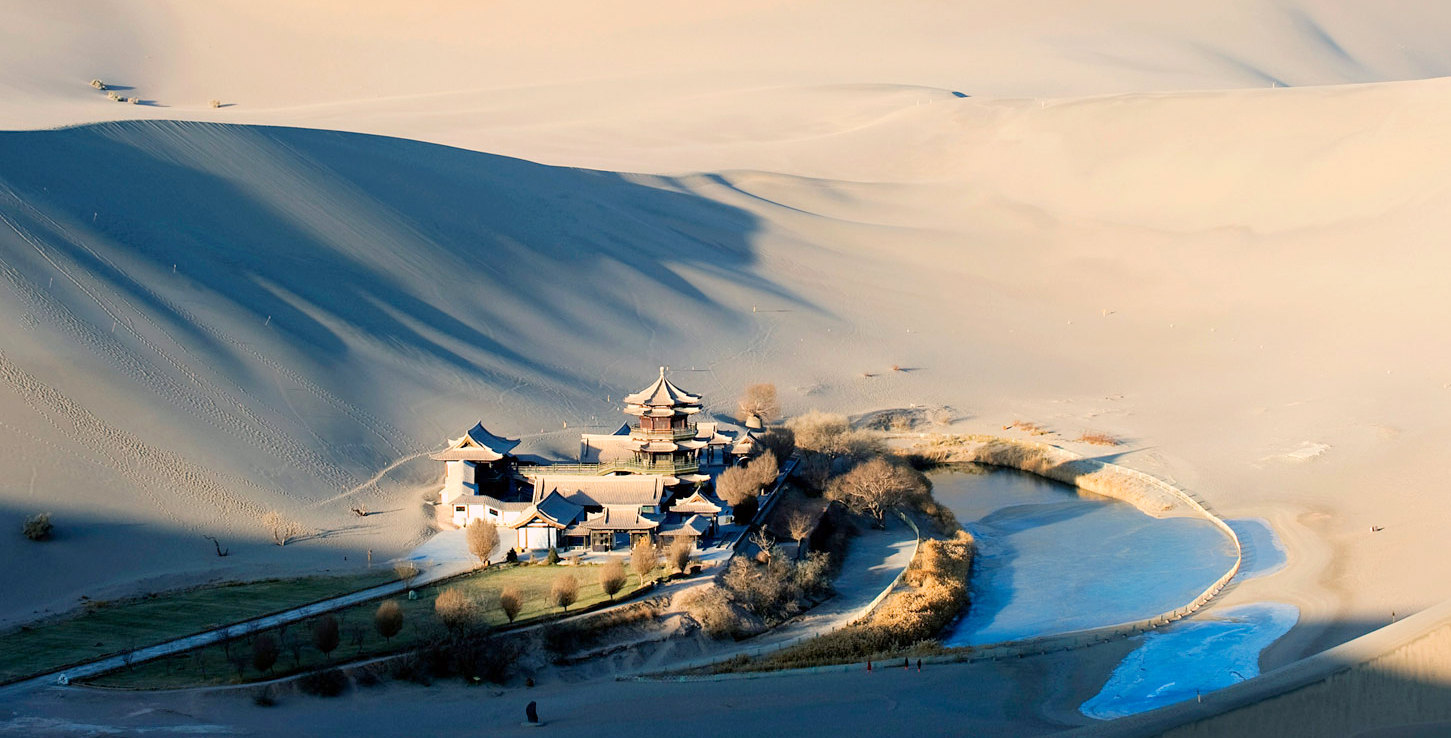
photo credit: Danita Delimont
- Travel a fabled Silk Route through China, Kyrgyzstan and Uzbekistan.
- Witness stunning natural scenery and tales of grand civilizations.
- Experience Samarkand and 2,000 year-old Bukhara, living museums with stunning Islamic architecture.
- Meet with potters and weavers, and dine with locals in their homes.
- See the Terra Cotta Warriors, one of the world’s greatest (and most recent) archeological finds, on a special-access visit.
- Stroll through Kashgar’s famous Sunday bazaar, mingling with locals who buy and sell a dizzying array of items, from livestock to housewares.
- Take in the natural beauty of Kyrgyzstan with visits to Issyk Kul Lake and Ala Archa National Park
.

ITINERARY
Day 1: Arrive in Xian
We are met on arrival in Xian, capital of Shaanxi Province, and transfer to our comfortable hotel. 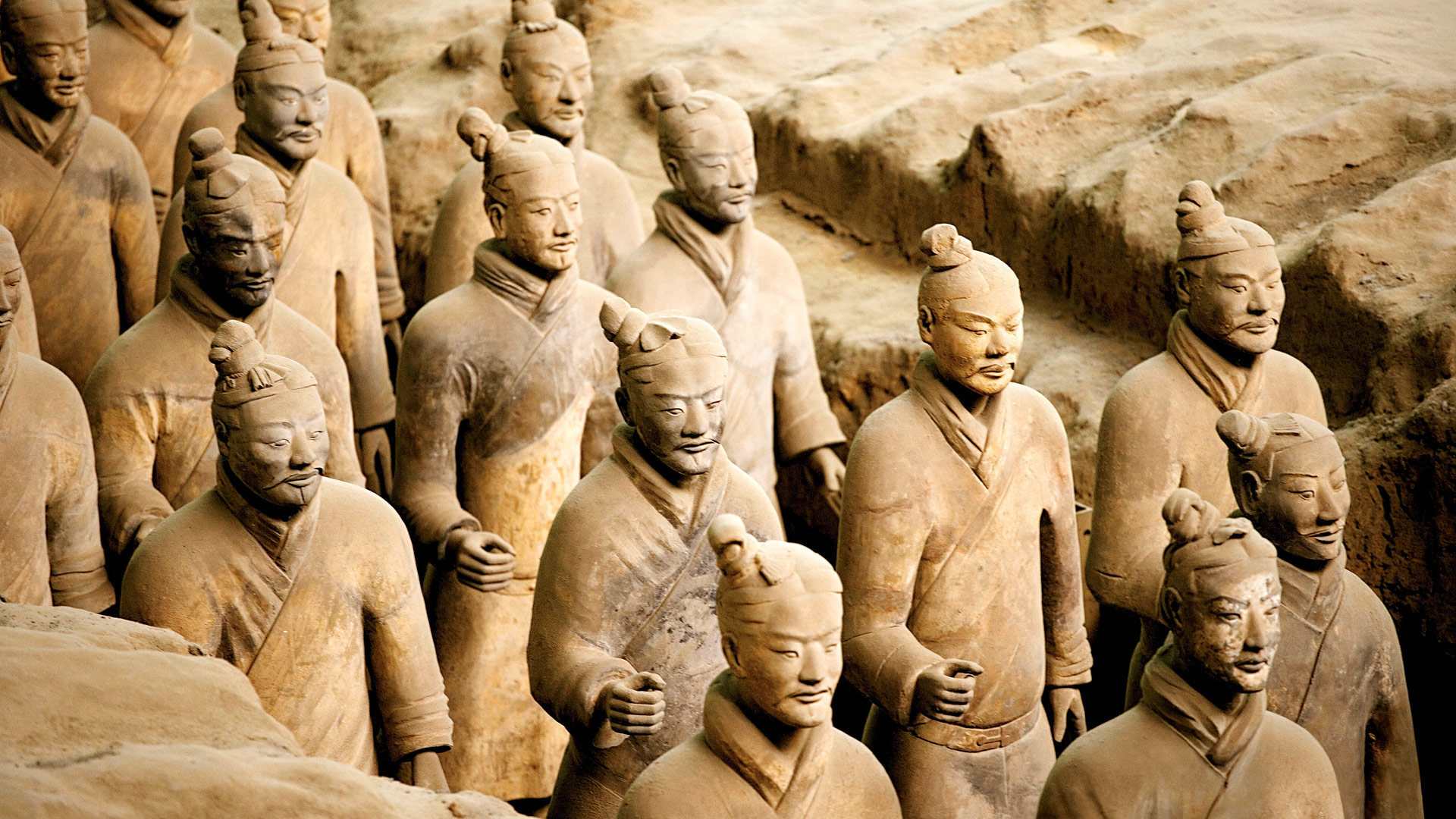
Once the largest city in the world, Xian was the capital of 11 dynasties (from the 11th century BCE to the 10th century CE) and was the easternmost city along the Silk Road. Perhaps no other Chinese city is so deeply entwined in the country's history. It hasn't been stage center in China for a thousand years, but Xian tends to think of Beijing as something of an upstart. This evening, gather for cocktails and a chance to meet our leader and traveling companions. Hilton Hotel Xian
Day 2: Xian
Today visit the excavations near the tumulus (or burial mound) of Emperor Qin Shi Huang Di, where in 1974 well-digging peasants serendipitously discovered the famous Terra Cotta Warriors. Decidedly one of the century's greatest archaeological finds, there are thousands of unique, life-size figures, each appearing to be modeled after a real person with individual personality and history. One almost expects a command to ring out, and the warriors to rouse themselves from a 2000-year stillness, and begin to march. We are offered a private, up-close view of the warriors with access to the lower deck.
Also, we will visit the Shaanxi History Museum where we have special access to some Tang Dynasty murals located in the vaults of the museum normally off-limits to visitors. As the cradle of Chinese civilization and the home of several Chinese dynasties, Shaanxi is a treasure trove of Chinese historical and cultural relics. Through well-chosen paintings, sculptures and relics, the museum takes us on a tour of China’s traditional history, starting with its unification under the first emperor, Qin Shihuang, to the end of the last dynasty. Xian has a rich culinary tradition and this evening we are treated to a traditional dumpling feast. Hilton Hotel Xian
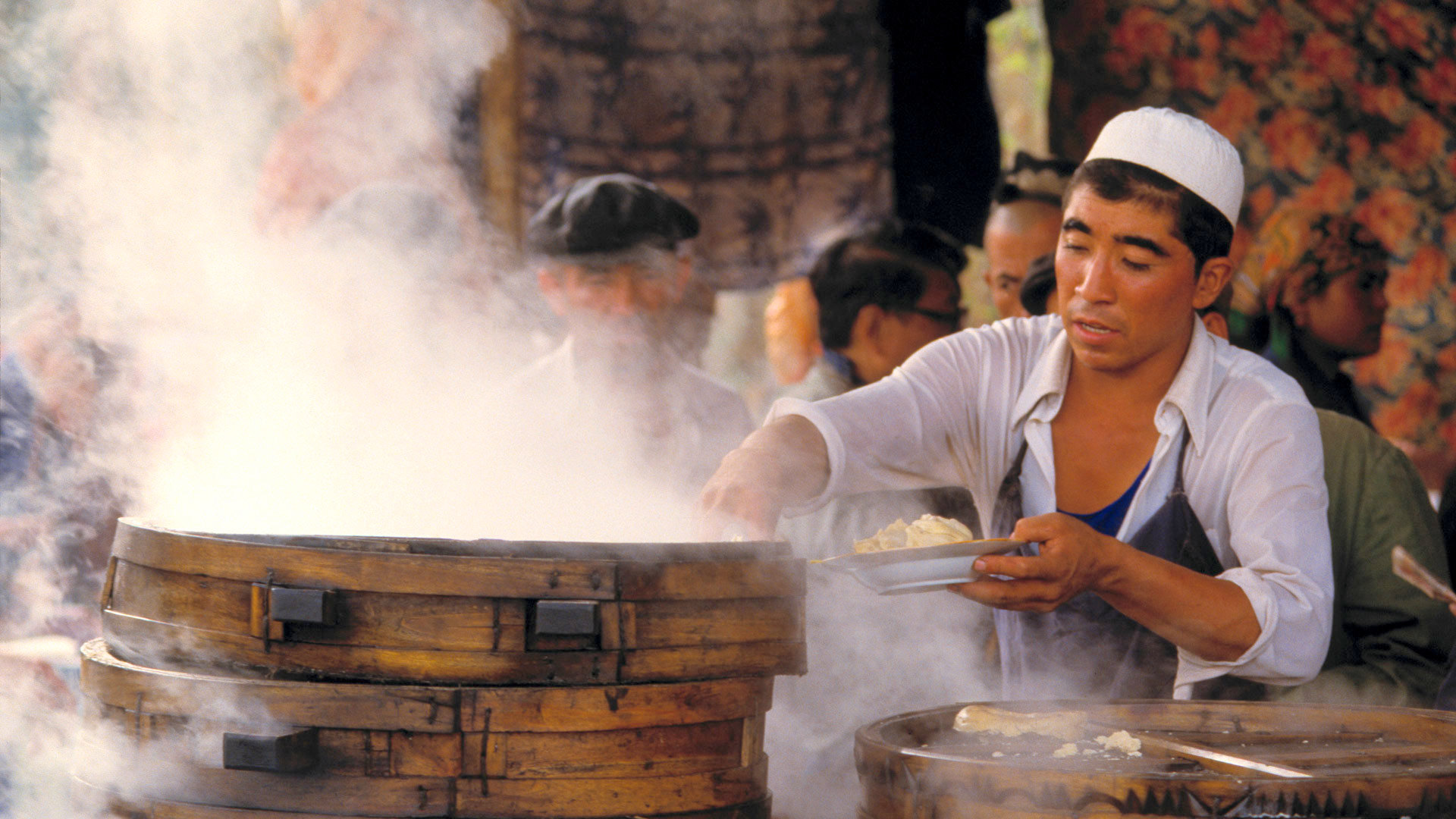
Day 3: Xian
Choose to wake early this morning and engage in a private Tai Chi lesson. Learn the intricate and graceful steps of this martial art alongside the locals at a lesson held on the city’s ancient walls.
Later we will visit the South Gate of the old city walls where we climb atop the structure to enjoy sweeping views across modern day Xian. Nearby we will visit the Big Wild Goose pagoda and the Drum Towers. We will also visit the Great Mosque and its surrounding Muslim neighborhood, where we find a way of life that derives as much from the ancient cultures of Central Asia along the Silk Road as it does from China. For over 1300 years, the Hui minority, who are practicing Muslims, have been an integral part of the colorful daily life of Xian. Hilton Hotel Xian
Day 4: Fly to Dunhuang
Today fly west to Dunhuang, a Silk Road metropolis perched on the edge of the Taklamakan Desert (thought by many to be the world’s fiercest desert). One of Central Asia's greatest explorers, Sir Aurel Stein, wrote of the town's “geographically important position...near the point where the greatest old high road of Asia from east to west is crossed by the direct route connecting Lhasa, and through it India, with Mongolia and the southern portions of Siberia.” Explore the town and its popular night market, where many of China’s ethnic minorities gather to present their wares to visitors including jewelry, handicrafts, Tibetan horns, scrolls and tea. Dunhuang Silk Road Hotel
Day 5: Dunhuang
Today visit the fabled and wondrous Caves of the Thousand Buddhas (now called the Mogao Grottoes by the Chinese). While visiting the site we’re accompanied by a private, expert guide through some of the area’s more unique caves with restricted access. The story of the Caves is the story of Buddhism’s slow progression up from India, eastward along the Silk Road, and into China proper.
Following lunch we will visit Singing Sand Mountain. The area has become quite a popular tourist destination, so we will take private jeeps or ride camels out toward a less-visited side of the dunes for sunset. This evening we will enjoy dinner al fresco with spectacular views of the Singing Sand Dunes. Dunhuang Silk Road Hotel
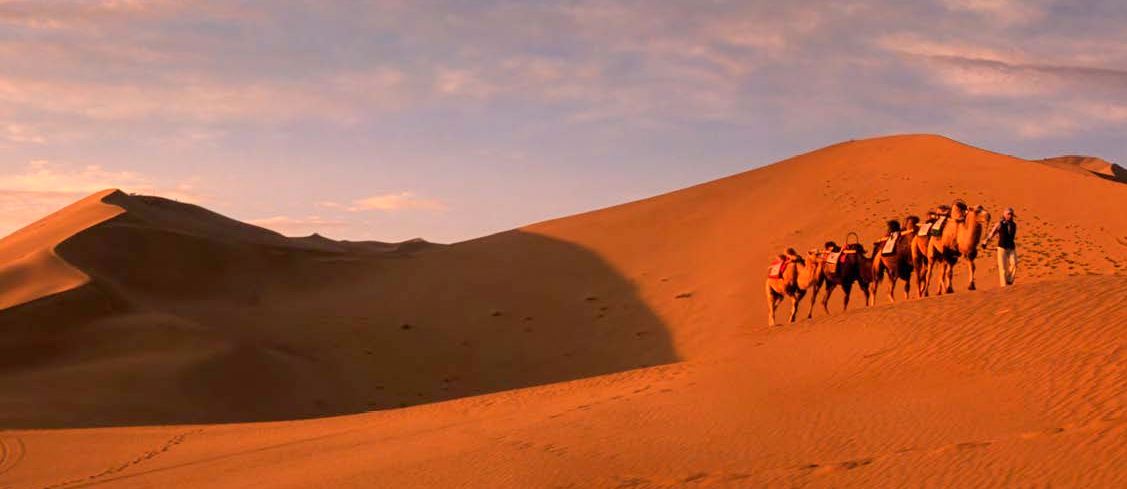
Day 6: Fly to Urumchi
Today we will return for a second visit to the Mogao Grottoes. The site is so large that it is not possible to see everything in one visit. We will also have time today to spend at the on-site museum. Later, drive to the airport and fly west to Urumchi, Xinjiang's capital. Situated on the northern slope of the Celestial Mountains, Urumchi (2997 feet) commands an outstanding view of the range's easternmost peak, Bogda Ola (18,132 feet). Urumchi is a distinctly modern city, notable chiefly for being the most landlocked place on earth. Unlike the rest of Xinjiang, which is heavily Uighur, Urumchi is roughly 90 per cent Han (which accounts for the pronunciation "Uru-muchi," or "Wulumuchi"). Enjoy the remainder of the day and dinner at leisure, with time to enjoy the comforts of our deluxe hotel. Sheraton Urumchi
Day 7: Urumchi
Today we will visit Urumchi’s Xinjiang Autonomous Region Museum to see its outstanding archaeological and ethnological collections, including the remarkable “Xinjiang Mummies,” some of which date back 4000 years. In a remarkable state of preservation, these prehistoric people are not Asian but Caucasian - tall, large-nosed and blond or brown-haired. Archaeological clues, such as their pottery, tools and especially their clothes of dyed woolen twill and felt, have shown that they migrated from the northern steppes and ancient Iranian lands well before China established its claim to the region in the first century BCE.
Later enjoy a delicious Uighur lunch at Miraj Restaurant followed by a visit to the 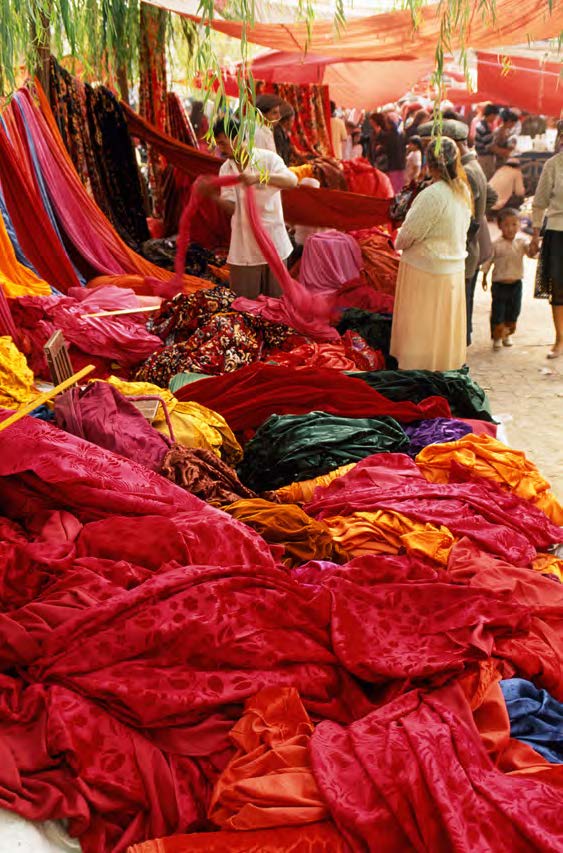 People’s Park and the Erdaoqiao Market. Dinner is on our own this evening. Sheraton Urumchi
People’s Park and the Erdaoqiao Market. Dinner is on our own this evening. Sheraton Urumchi
Day 8: Fly to Kashgar
Fly to Kashgar along the elegant curve of the Tien Shan with snow peaks to the right and the deadly Taklamakan to the left (we’re reminded again that the oasis cities of the Silk Road depend on snow melt from the mountains for their existence).
One of the loneliest, and at the same time, most pivotal outposts of imperial power, Kashgar was at the center of the Great Game, a centuries-long jousting for hegemony in Central Asia between Britain and Russia, both expansionist, covetous powers. Today Kashgar, like many of the Silk Road oases, is experiencing a new wave of construction and modernization. We are witness to the battle between Kashgar’s old and new for the making of a modern Silk Road junction. Spend time roaming the fabled oasis city and Id Kah, China’s largest mosque, a good place to sit quietly and watch the city’s kaleidoscopic ferment. Radisson Blu Hotel
Day 9: Kashgar
Today visit Kashgar’s Sunday bazaar which has attracted travelers from near and far for centuries. We’ll see visitors from Beijing and New York wandering the lanes of the labyrinthine covered bazaar mingling with Kazakhs, Tajiks, and Uighurs from nearby cities. Sellers and buyers race horses up and down the dusty lane of the livestock market, or buy a sweet concoction made with oasis fruits and winter ice. After lunch, amble through the winding, walled paths of the old city, watching theatrical vendors make, praise, and sell indecipherable local delicacies. This evening enjoy dinner at a local restaurant. Radisson Blu Hotel
Day 10: Drive to Naryn, Kyrgyzstan
Many places are called the Roof of the World, but we give this honor to the Pamirs for two reasons. One: sheer ancientness. When Marco Polo passed through here 700-odd years ago, it already had long and logically been called Roof of the World. Second: the Pamirs are one of Earth's great artworks. From the whorls of the Pamir Knot radiate five of the planet's highest mountain ranges: the Tien Shan (the "Celestial Mountains"), the Kun Lun, the Karakoram, the Hindu Kush (the "Hindu Killers"), and the Great Himalaya itself. In a very long day of driving and border crossings, we will cut the northern cord of the Pamir Knot, crossing the multifarious watershed, and from the basin of the Taklamakan Desert, across the Turugart Pass, we arrive in Naryn, Kyrgyzstan. Khan Tengri Hotel
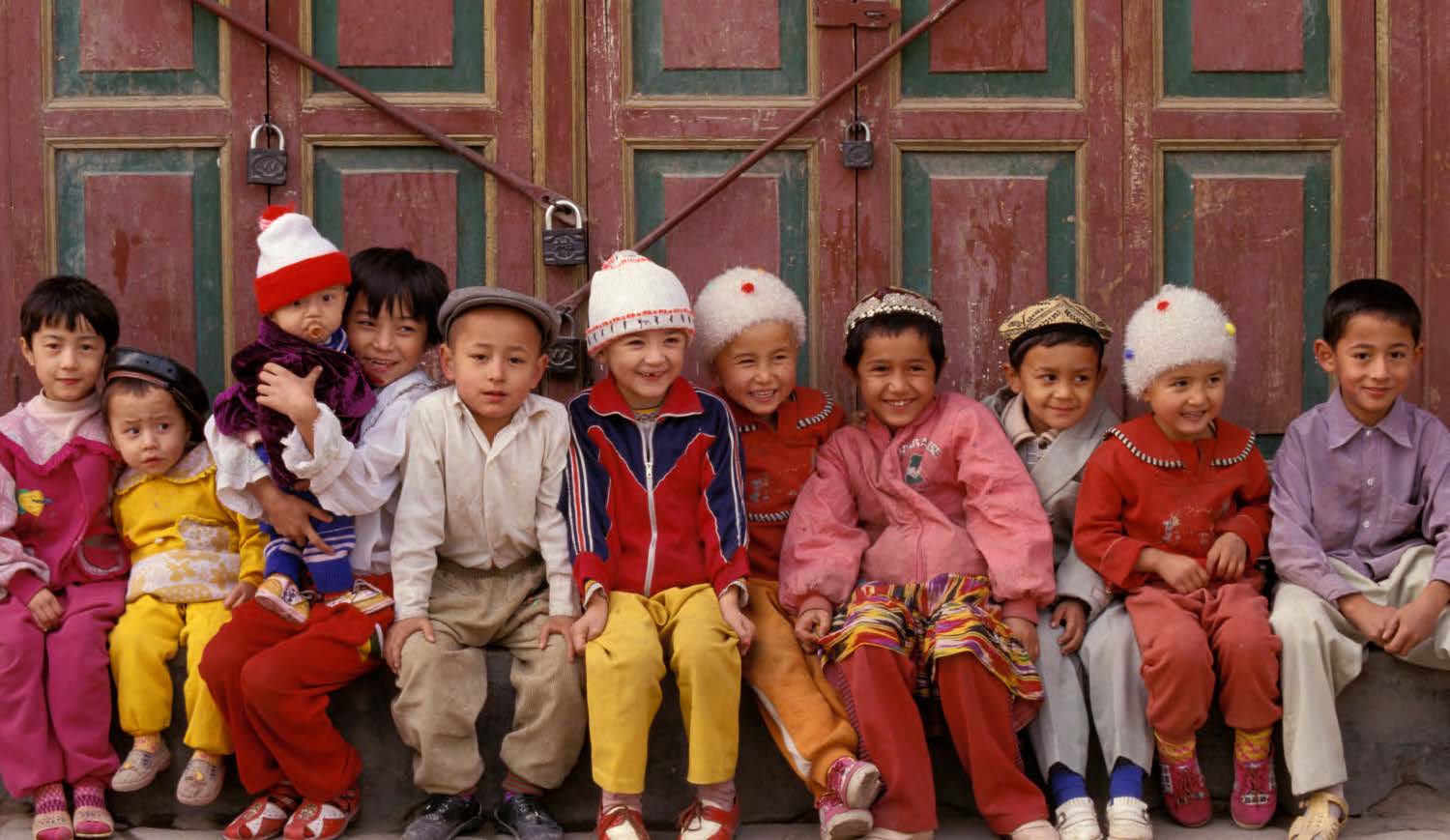
Day 11: Drive to Bishkek
Today we will make our way through the heart of Kyrgyzstan, wending north and eastward along the shores of Issyk Kul, which is known as "the Kyrghyz Sea." Issyk Kul, said to be the bluest lake in the world, sits at 5193 feet surrounded by 9000-foot peaks and is warmed by innumerable hot springs.
In Kochkor village we will stop to visit a felt-making workshop and have lunch with a local family. We will also visit Burana Tower, an 11th-century minaret near the ancient town of Balasagun, a Sogdian city and later a Karakhanid capital. Excavations here and at other sites in the Shamsy Valley yielded exquisite gold burial masks and Scythian treasure, much of which is now at the Hermitage Museum in St. Petersburg.
Arrive in Bishkek (formerly Frunze), the Kyrgyz capital situated in the Chu River Valley at the base of the Kyrgyz Ala-Tau Ridge. Unpretentious and laid-back, Bishkek hosts no major sites, but is a green, pleasant place surrounded by the Tien Shan Mountains. Dinner this evening is at leisure.
Hyatt Regency Hotel
Day 12: Bishkek
In Bishkek we will visit the State History Museum, which has an excellent display of traditional Kyrgyz culture including embroidery, carpets, an entire yurt, and the Manas monument, dedicated to the national hero of the Kyrgyz people. Our walking tour of the compact city begins with Ala Too Square. We see the changing of the Guard of Honor and the main government ministries in the Old Square: the White House, Parliament building, American University, and one of the few remaining statues of Lenin to have survived in Central Asia. We stop briefly at Victory Square before returning to our hotel. The remainder of the day is at leisure. Dinner this evening is at a local restaurant with traditional musical entertainment. Hyatt Regency Hotel
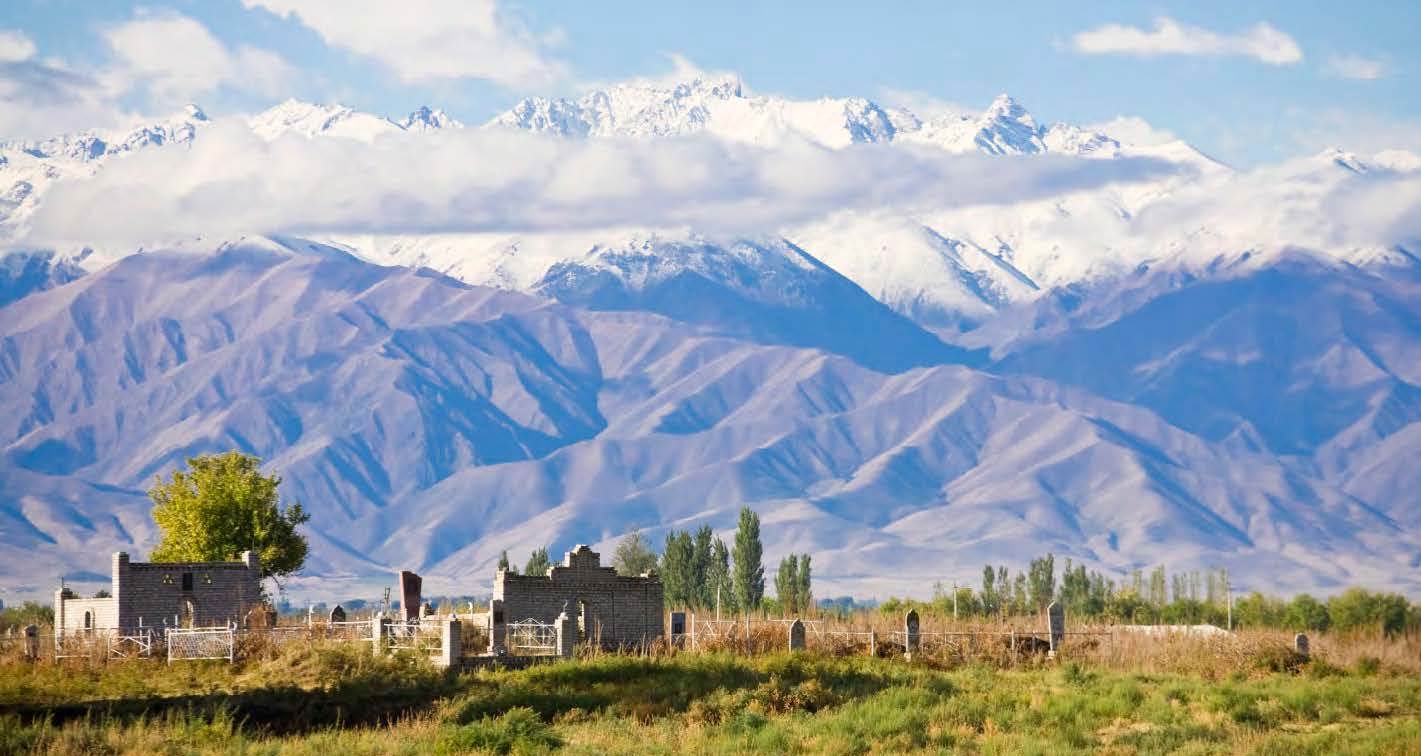
Day 13: Ala Archa; Fly to Tashkent
Today journey outside of Bishkek to visit Ala Archa. En route we’ll make a stop at a traditional Kyrgyz cemetery and also visit the Gumbez (mausoleum) of Baitik Baatyr, a respected tribal leader who in rebellion against the injustices of the Kokand Khan, killed him in 1862, thus paving the way for Tsarist rule.
Then continue on to Ala Archa National Park, a beautiful nature reserve, where we have the option to take an easy walking trail up the main gorge for spectacular views of the Tien Shan Mountains. Enjoy a delicious lunch here before returning to the city. This evening we will fly to Tashkent, capital of Uzbekistan. International Hotel
Day 14: Tashkent; Fly to Bukhara
It is difficult to believe that until 1865, when it was overrun by Imperial Russia, Tashkent was a walled city. Not a trace of it remains today. Almost leveled by an earthquake in 1966, Tashkent was re-built in determined and occasionally grand fashion, and is today the 4th-largest city in the former Soviet Union.
We will explore the small part of “old Uzbek Tashkent” that remains, including Kukeldash Madrasa, Abu Bakr Kaffel Shoshi Mausoleum, and Barak Khan Madrasa - all built in the 16th century - and Khast Imam Mosque which hosts an enormous 7th-century Koran. (It is not always open to view, but we will try.) We will also visit the Museum of Applied Arts. Housed in a building constructed in the traditional style, it became a museum in 1937. Time permitting we’ll also stop by Tashkent’s famed Chorsu Bazaar. Late this afternoon we visit the home and studio of an Uzbek potter. Here we are treated to an elegant garden dinner and have the opportunity to learn more about the traditional designs and paints being used. This evening we will fly to Bukhara. Salom Inn
Day 15: Bukhara
Bukhara was Central Asia’s holiest Muslim city, and its richest bazaar. Its emir was traditionally and inventively inhospitable to heathens; more than one passerby was cast into a bug- and rat-filled pit before Alexander “Bukhara” Burns got in and out unscathed in the 1830s and became a Victorian superstar. Locals were rarely so lucky - the stone below the Tower of Death is supposedly hollowed by the impact of miscreants hurled from above. Bukhara, unlike Samarkand, is a living museum and the buildings that we will visit were all built by Abdullah Khan II.
Near to our hotel we will visit the Labi Hauz, a large pool lined with very old mulberry trees and a perfect spot to have some tea. On one end of the pool is a madrasa depicting unusual images of herons and a sun with a human face on its portal. Ulug Bek Madrasa is one of the oldest theological colleges in the country and one of three commissioned by Ulug Bek, Tamerlane's grandson, and Abdul Aziz Khan Madrasa, one of the last to be built in Bukhara. We will also visit the Kalan Mosque, formerly the Congregational Mosque, and its nearby 12th-century Kalan Minaret, the most impressive minaret in Central Asia. Opposite is the 16th-century Mir-i-Arab Madrasa which was closed in 1920 in keeping with official Soviet policy, but opened again by Stalin in 1941, when he needed to get the population behind him during WWII.
Lunch will be in a private home where we experience 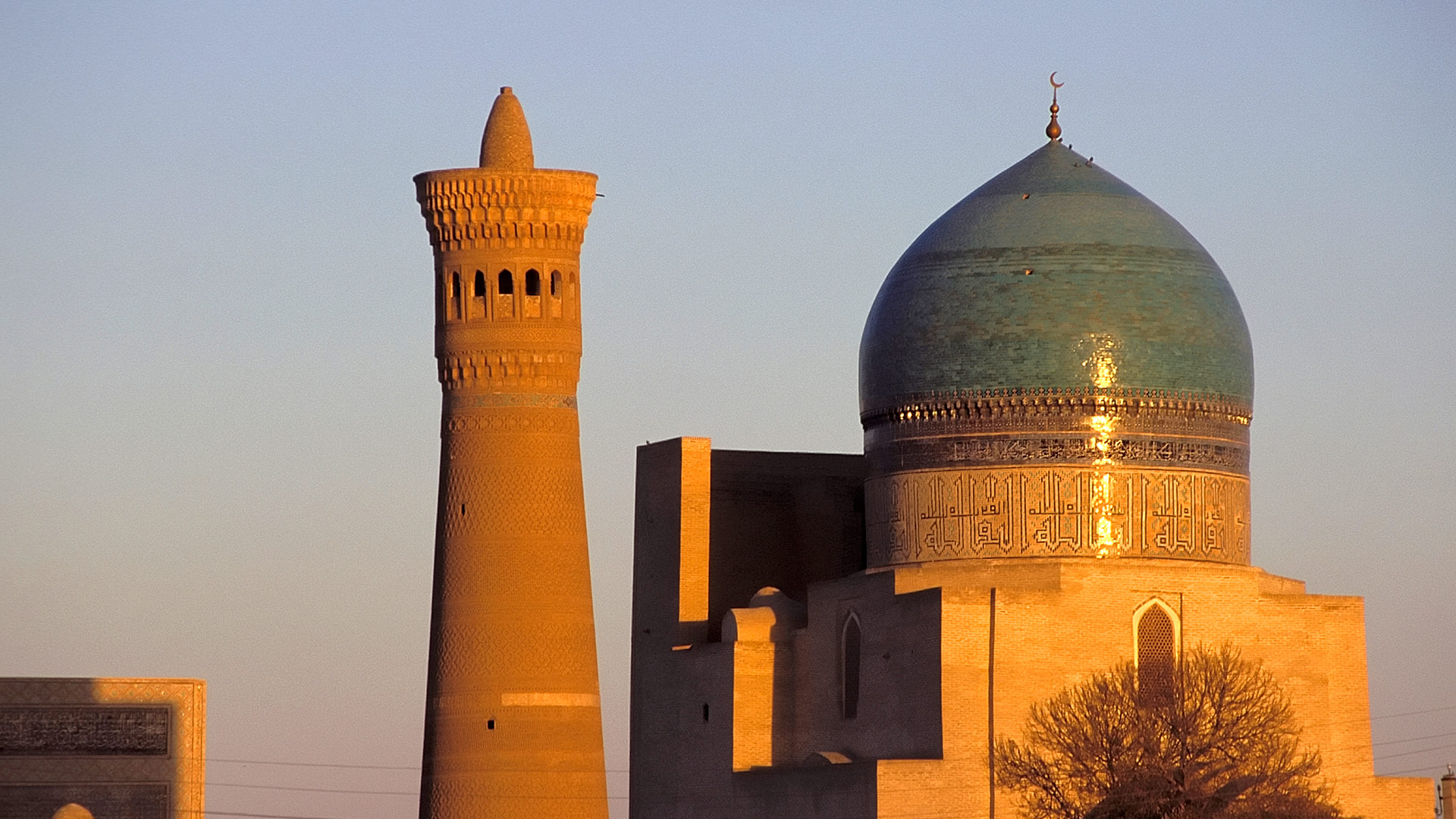 Uzbek hospitality at its finest, and may even have a peek at the family’s suzani collection. Afterwards we will visit the Arg, which houses the 17th-century Friday Mosque. Just behind the Arg is the Zindon prison, notorious for its “bug pit”, where British soldiers Connolly and Stoddart were imprisoned with scorpions and other six and eight legged creatures, and then later executed. Nearby is the Bolo Hauz Mosque with its exquisitely renovated ceiling panels, formerly used by the Khans for Friday prayers. We then continue to the mausoleum of Ismail Samanidon - known for its spectacular brickwork and one of the best examples of Samanid architecture. This evening walk through the narrow streets of the Jewish Quarter to a rooftop restaurant for dinner. Salom Inn
Uzbek hospitality at its finest, and may even have a peek at the family’s suzani collection. Afterwards we will visit the Arg, which houses the 17th-century Friday Mosque. Just behind the Arg is the Zindon prison, notorious for its “bug pit”, where British soldiers Connolly and Stoddart were imprisoned with scorpions and other six and eight legged creatures, and then later executed. Nearby is the Bolo Hauz Mosque with its exquisitely renovated ceiling panels, formerly used by the Khans for Friday prayers. We then continue to the mausoleum of Ismail Samanidon - known for its spectacular brickwork and one of the best examples of Samanid architecture. This evening walk through the narrow streets of the Jewish Quarter to a rooftop restaurant for dinner. Salom Inn
Day 16: Bukhara
Today visit the enormous mausoleum of Bakhuddin, founder of the Nakshbandi Sufi order. Friday is generally the best day to visit as one sees many pilgrims paying homage. We also visit the nearby Sitorai Mokhi Hosa, the Palace of Moon and Stars, the summer residence of the former emir of Bukhara. Time permitting, we’ll visit the fascinating Chor Bakr Necropolis before lunch in a local restaurant serving the best kebab in the country (according to locals). Later we have leisure time to walk about the ancient city. Bukhara was a major trading center on the Old Silk Road and even now it remains one of the best places to shop in the country. Three dome-covered bazaars remain, still occupied by carpet vendors and other merchants. Salom Inn
Day 17: Drive to Samarkand
“For lust of knowing what should not be known, we take the Golden Road to Samarkand,” wrote James Elroy Flecker. Today we follow that road to Samarkand and soon understand what Flecker was getting at. Samarkand is a modern Uzbek city, but it still vibrates with antique intensity. Even Alexander the Great who conquered the city in 329 BCE said then that it was more beautiful than he had imagined. Known as Maracanda to the Greeks, the city was founded sometime in the fifth century BCE and was the center of the Sogdian Empire.
After settling in at our hotel visit the spectacular funerary complex of Shah-i-Zinda. Many consider this complex to be Samarkand’s most moving sight, and it is here that we find the city’s finest majolica tile work. The innermost and holiest shrine is thought to be the tomb of Qusam ibn-Abbas, a cousin of the Prophet Mohammed. Dinner this evening is in the workshop of a local carpet maker. The family who established the workshop is renowned for their thoughtful use of natural dyes and their fair and equitable business practices promoting a healthy working environment. We have a delicious meal with the family tonight, dining among beautiful examples of their work. Hotel Grand Samarkand
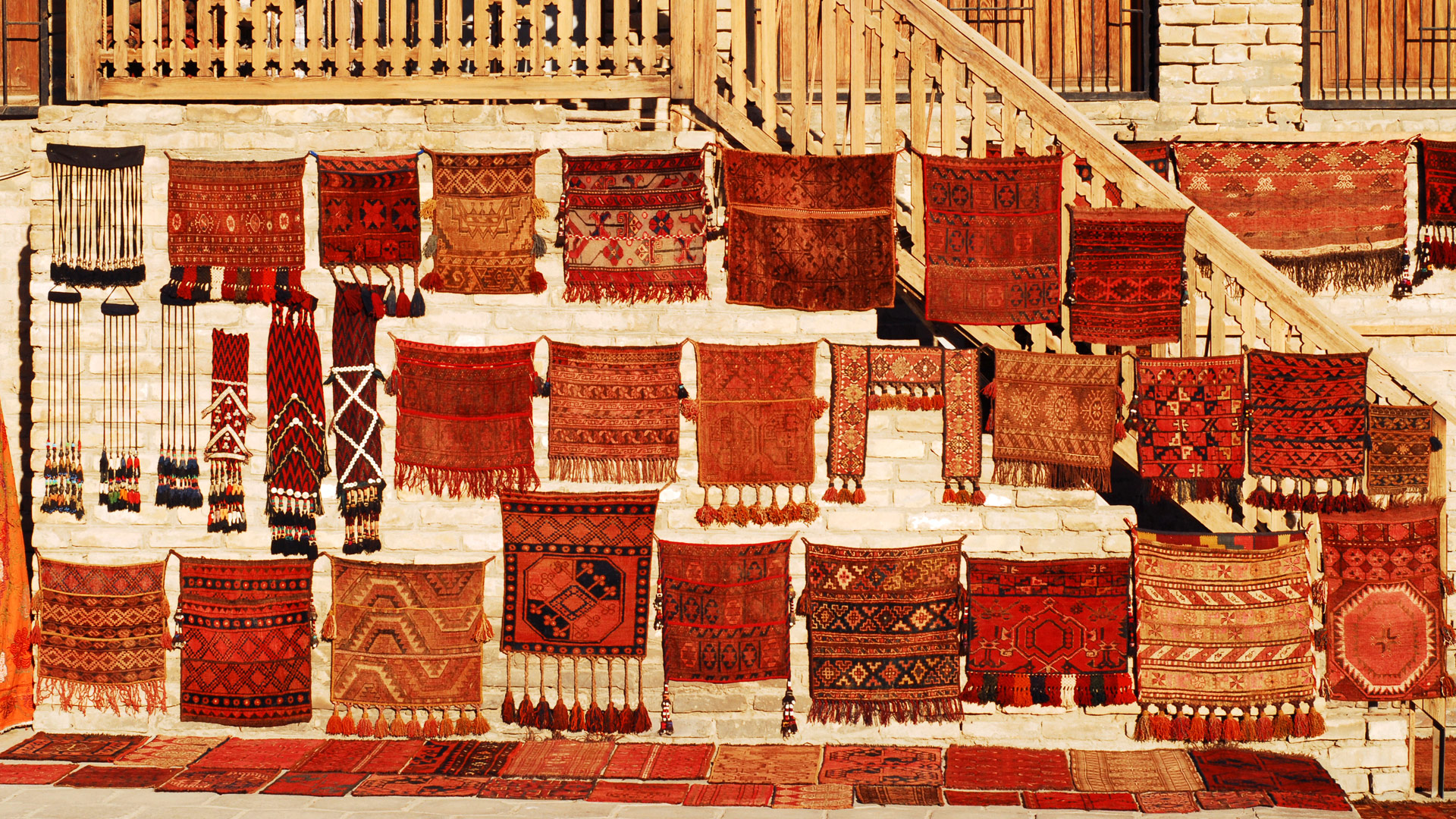
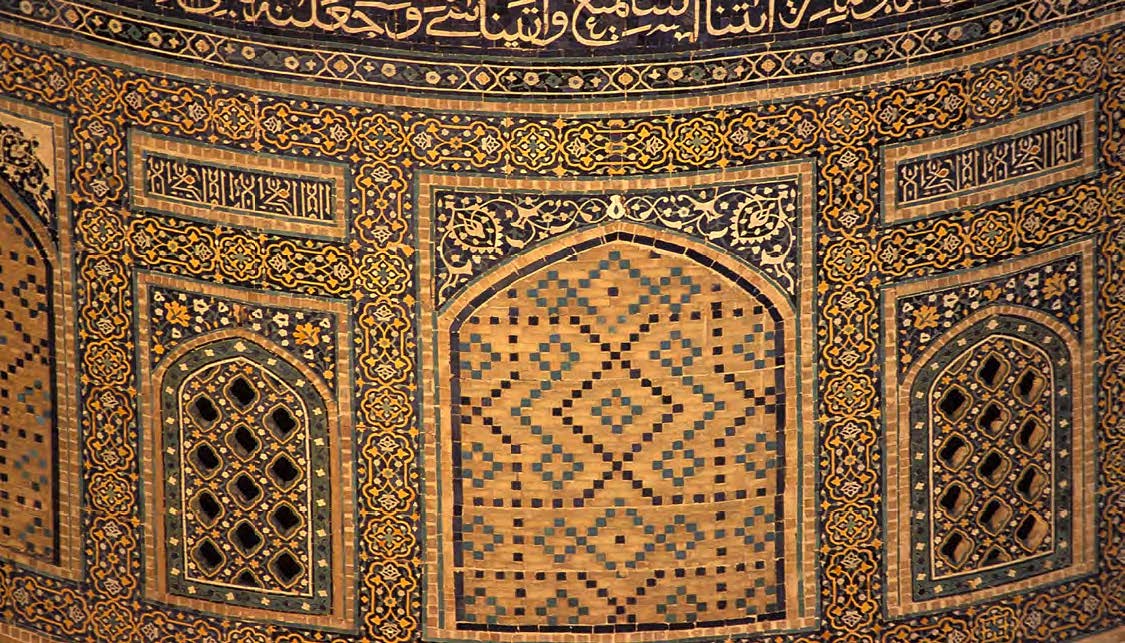
Day 18: Samarkand
Samarkand grew as a city of importance under all the Central Asian invaders until it was destroyed by Genghis Khan in the 13th century. However, unlike other cities destroyed by that most devastating of marauders which never regained past glory, Samarkand revived like the proverbial phoenix and became greater than ever, most spectacularly under a descendant of Genghis named Timur Leng (Tamerlane), and his grandson Ulug Beg. What stands today dates back to the time of their rule.
Today visit one of the most famous sites in all of Central Asia - the Registan. Called by British Imperialist Lord Curzon, the “noblest public square in the world,” Samarkand’s Registan, with its shimmering azure and cobalt mosaics, its dazzling calligraphy and its monumental portals, elicits certain breathlessness no matter how many times it is seen. The square is anchored to the west by the Ulug Beg Madrasa, to the east by Shir Doh Madrasa, and to the north by Tila Kari Madrasa. We will also visit the tomb of Timur himself - the Gur Emir. In June 1941, as the story goes, the famous Soviet archeologist Gerasimov disinterred Timur’s body from this tomb, ignoring the inscription, “He who opens this tomb will bring upon his country an invader more terrible than me.” As the Professor held the conqueror’s skull in his hand, an assistant burst into the burial chamber with the news that Germany had invaded the Soviet Union.
For lunch, we are driven a short distance outside of town to a mulberry grove that provides the means for a family of papermakers. The more rural location is delightful, set amid trees framed by canals and streams. We’ll see how this paper is hand-made and enjoy a meal in this peaceful, outdoor setting. After lunch, we return to Samarkand to visit Bibi-Khanum Mosque, or what remains of it, built by Timur’s wife. It collapsed in the earthquake of 1897, but it had been crumbling for years, the weight of its massive dome too much for the walls to bear. Hotel Grand Samarkand
Day 19: Drive to Tashkent
Today we will drive to Tashkent. On arrival we have a delicious lunch at Caravan Restaurant before further explorations in the capital. This evening enjoy a festive farewell dinner. International Hotel
Day 20: Depart Tashkent
Today we transfer to the international airport and check-in for our homeward-bound flights.
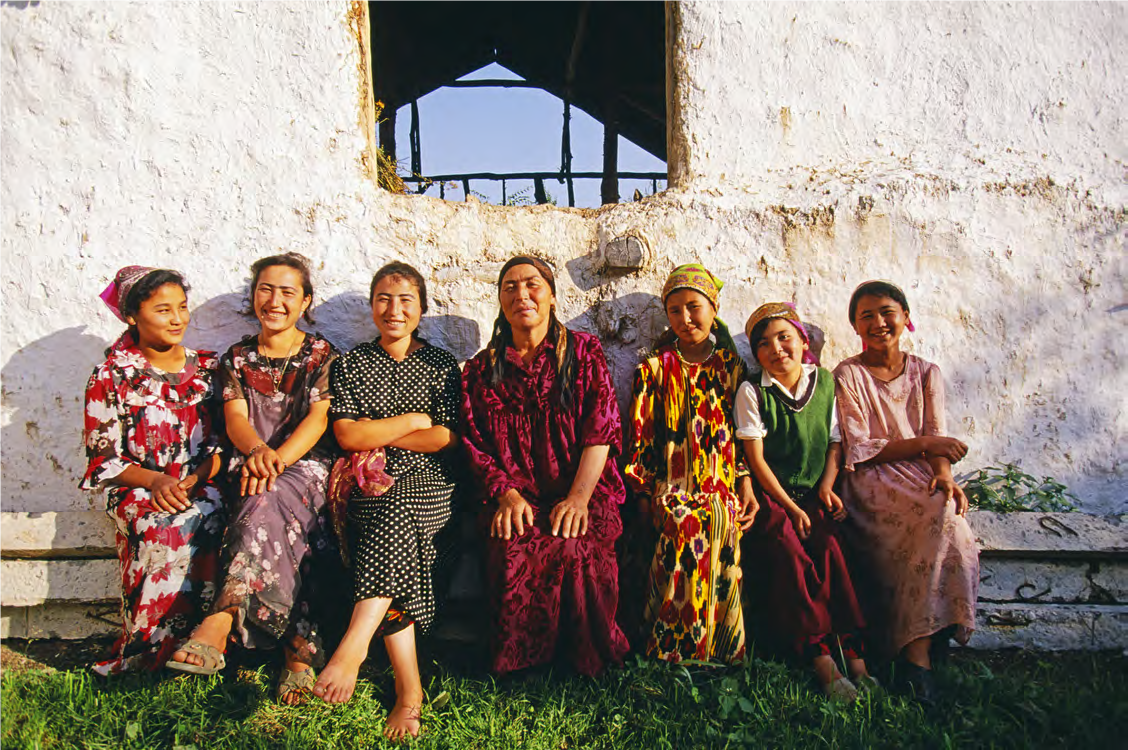
Group Tour | 20 Days
Resorts & Charted Courses in association with GeoEx
Itinerary courtesy of GeoEx | Photography by Danita Delimont
Call for Updated Details: 800-757-6422






 People’s Park and the Erdaoqiao Market. Dinner is on our own this evening. Sheraton Urumchi
People’s Park and the Erdaoqiao Market. Dinner is on our own this evening. Sheraton Urumchi

 Uzbek hospitality at its finest, and may even have a peek at the family’s suzani collection. Afterwards we will visit the Arg, which houses the 17th-century Friday Mosque. Just behind the Arg is the Zindon prison, notorious for its “bug pit”, where British soldiers Connolly and Stoddart were imprisoned with scorpions and other six and eight legged creatures, and then later executed. Nearby is the Bolo Hauz Mosque with its exquisitely renovated ceiling panels, formerly used by the Khans for Friday prayers. We then continue to the mausoleum of Ismail Samanidon - known for its spectacular brickwork and one of the best examples of Samanid architecture. This evening walk through the narrow streets of the Jewish Quarter to a rooftop restaurant for dinner. Salom Inn
Uzbek hospitality at its finest, and may even have a peek at the family’s suzani collection. Afterwards we will visit the Arg, which houses the 17th-century Friday Mosque. Just behind the Arg is the Zindon prison, notorious for its “bug pit”, where British soldiers Connolly and Stoddart were imprisoned with scorpions and other six and eight legged creatures, and then later executed. Nearby is the Bolo Hauz Mosque with its exquisitely renovated ceiling panels, formerly used by the Khans for Friday prayers. We then continue to the mausoleum of Ismail Samanidon - known for its spectacular brickwork and one of the best examples of Samanid architecture. This evening walk through the narrow streets of the Jewish Quarter to a rooftop restaurant for dinner. Salom Inn








